The 15 Most Famous Natural Wonders Of Brazil
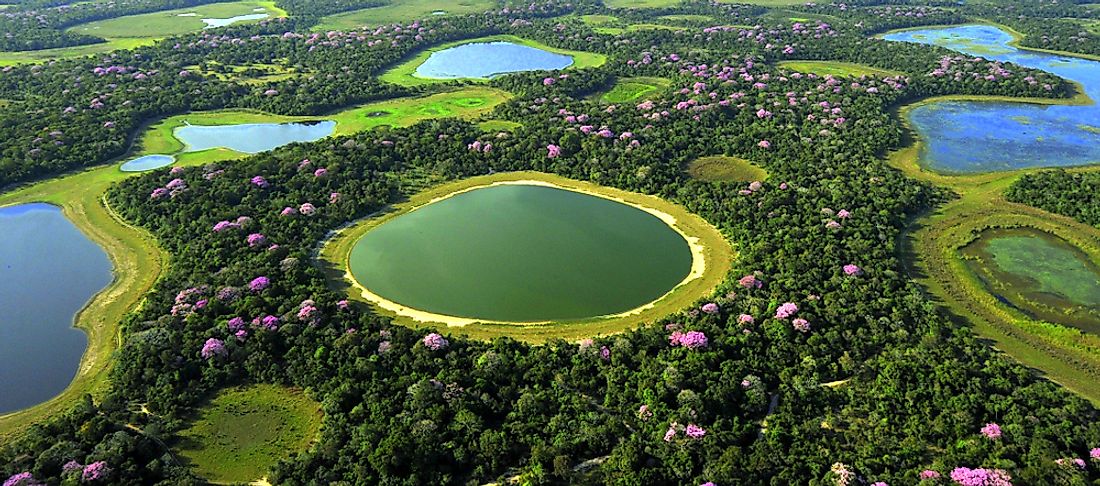
- Brazil has several natural wonders that are globally famous for their beauty, uniqueness, and ecological significance.
- The Meeting of Waters is a region where the sandy colored waters of the Amazon River meet the dark waters of the Rio Negro River.
- Brazil also hosts South America's deepest cave, the Abismo Guy Collet that is 671 m deep.
- The Iguazú Falls in Brazil are spectacular waterfalls on the Iguazu River and is the world’s largest waterfall system.
- No list of Brazil’s top natural wonders can be complete without mentioning the Amazon rainforest.
Brazil is a land of many wonders, both natural and human-made. The country has several geographical features that are globally famous for their beauty, uniqueness, and ecological significance. From the pristine and dense rainforests of the Amazon to the rolling white sand dunes and turquoise blue lagoons of the Lençóis Maranhenses National Park, Brazil's natural wonders always inspire the awe. Travelers and explorers from every corner of the globe are drawn to the country in the quest to unravel the mysteries of these marvels.
World Atlas has compiled a list of 15 such places in Brazil that are truly wonders of nature like the Meeting of Waters, Poco Encantado, Dunes Of Jalapao, Fernando de Noronha, Sugarloaf Mountain, Amazon Rainforest, and others.
15. The Meeting Of Waters, Manaus
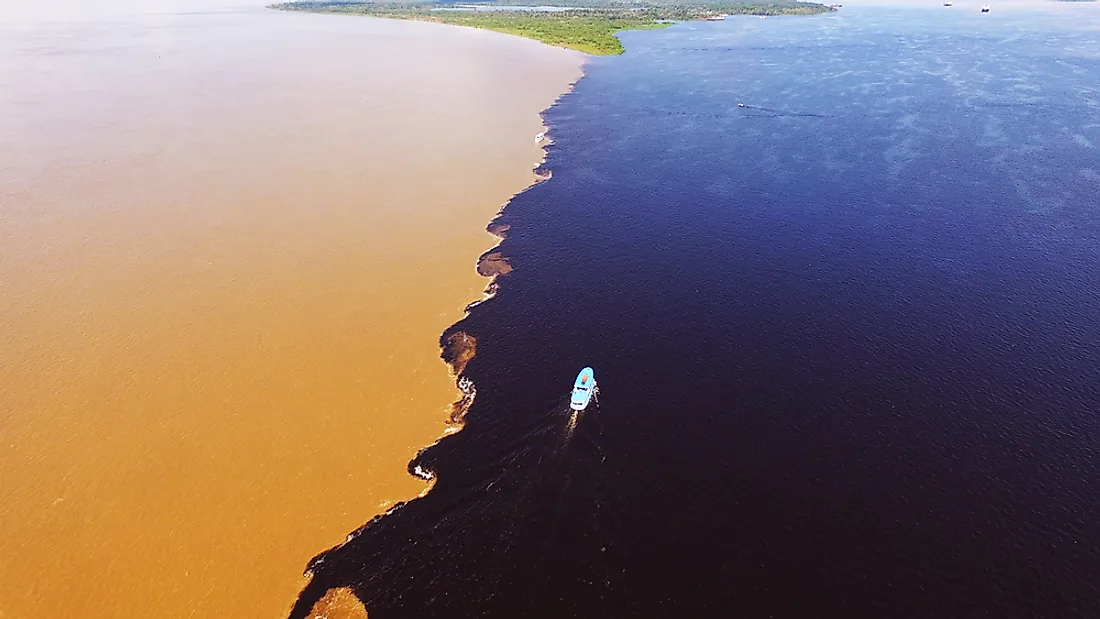
The Meeting of Waters is a region where the sandy colored waters of the Amazon River meet the dark waters of the Rio Negro River. The waters of the two rivers run for a distance of 6 km parallel to each other without mixing at the Meeting of Waters, a top tourist attraction in Manaus, Brazil. The differences in temperature, speed, and density of the two rivers prevent the mixing of their waters.
14. Chapada dos Veadeiros, Goiás
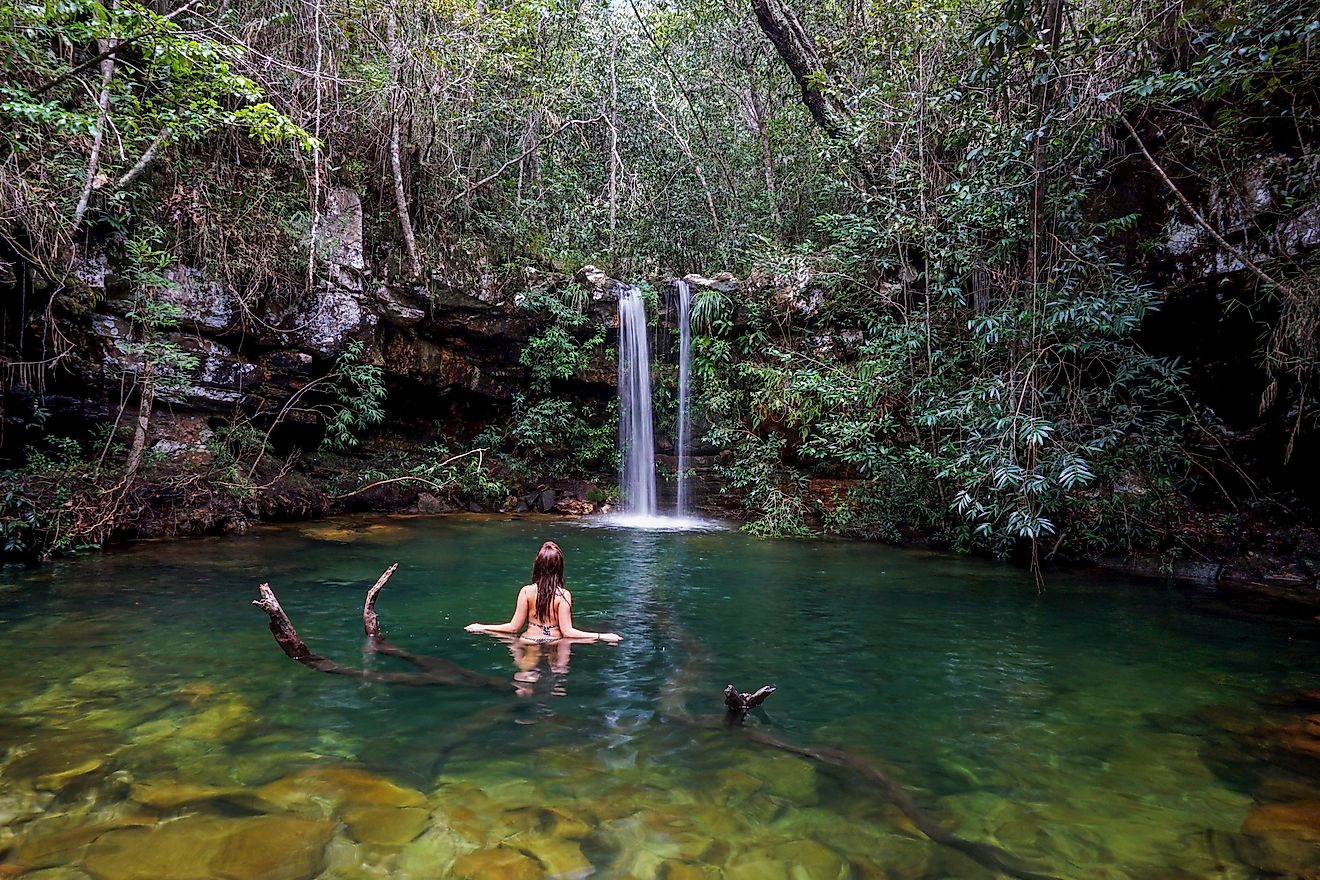
Loaced atop an ancient plateau in the Brazilian state of Goiás, the Chapada dos Veadeiros National Park features enchanted waterfalls and lakes that look like they could be home to fairies and mermaids. It was established as a national park in 1961 and enlisted listed as a UNESCO World Heritage Site in 2001. The park is noted for its rock formation which are some of the oldest ones on the planet and also its stunning waterfalls. Animals like marsh deer, maned wolves, jaguar tapir, toucan, king vulture, rhea, are found in the park. Many of them are extremely rare and threatened with extinction.
13. Serra dos Órgãos Mountain Range, Rio de Janeiro
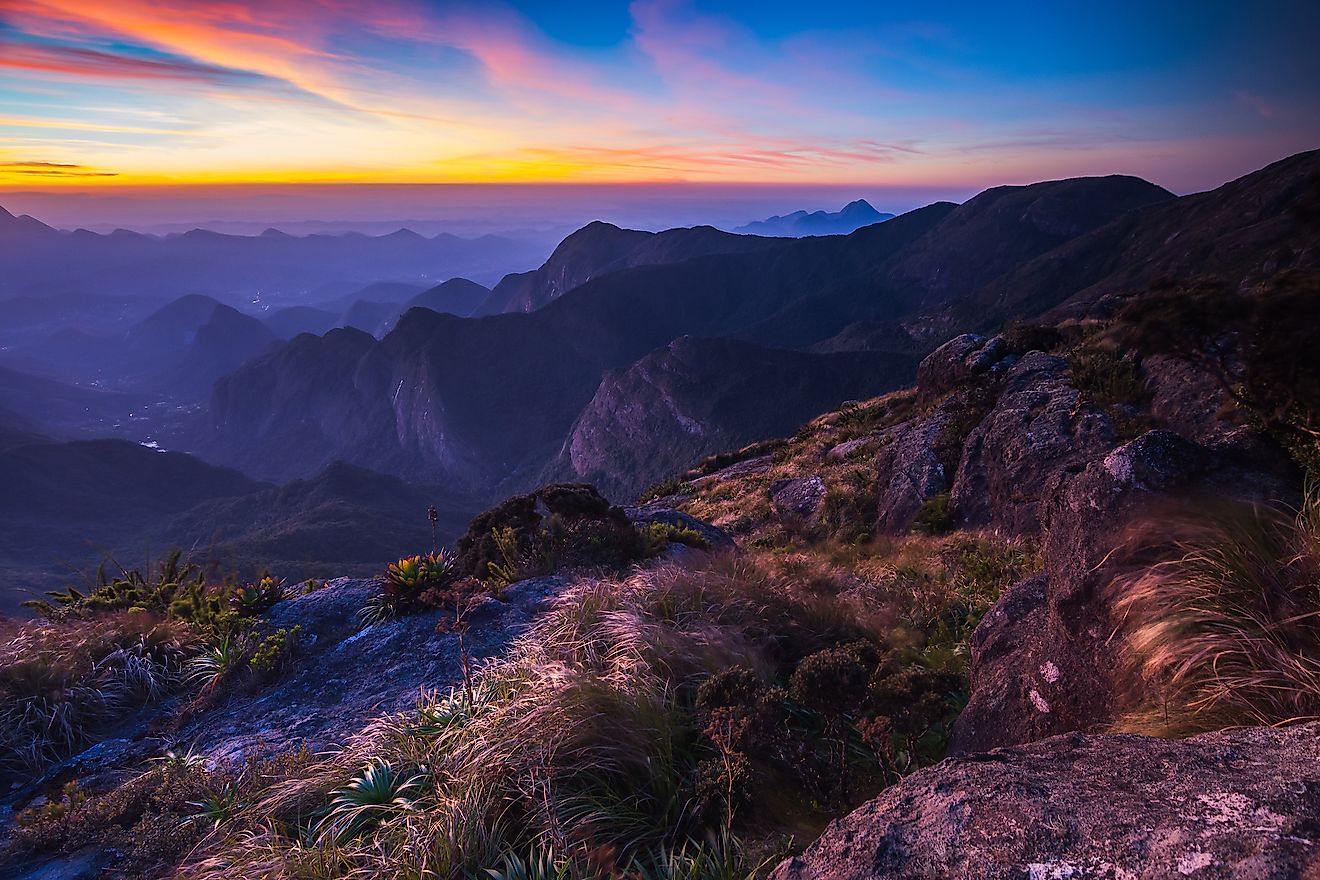
This spiky mountain range is located within a national park that covers an area of around 20,000 hectares. The name Serra Dos Orgaos refers to the shape of the mountains that resembles the tip of church pipe organs. It attracts many hikers who traverse its lowland and highland forests that are teeming with exotic birds and other wildlife. Aside from its lush forest, the trails also feature waterfalls that offer refreshing respite for trekkers.
12. Poco Encantado, Bahia
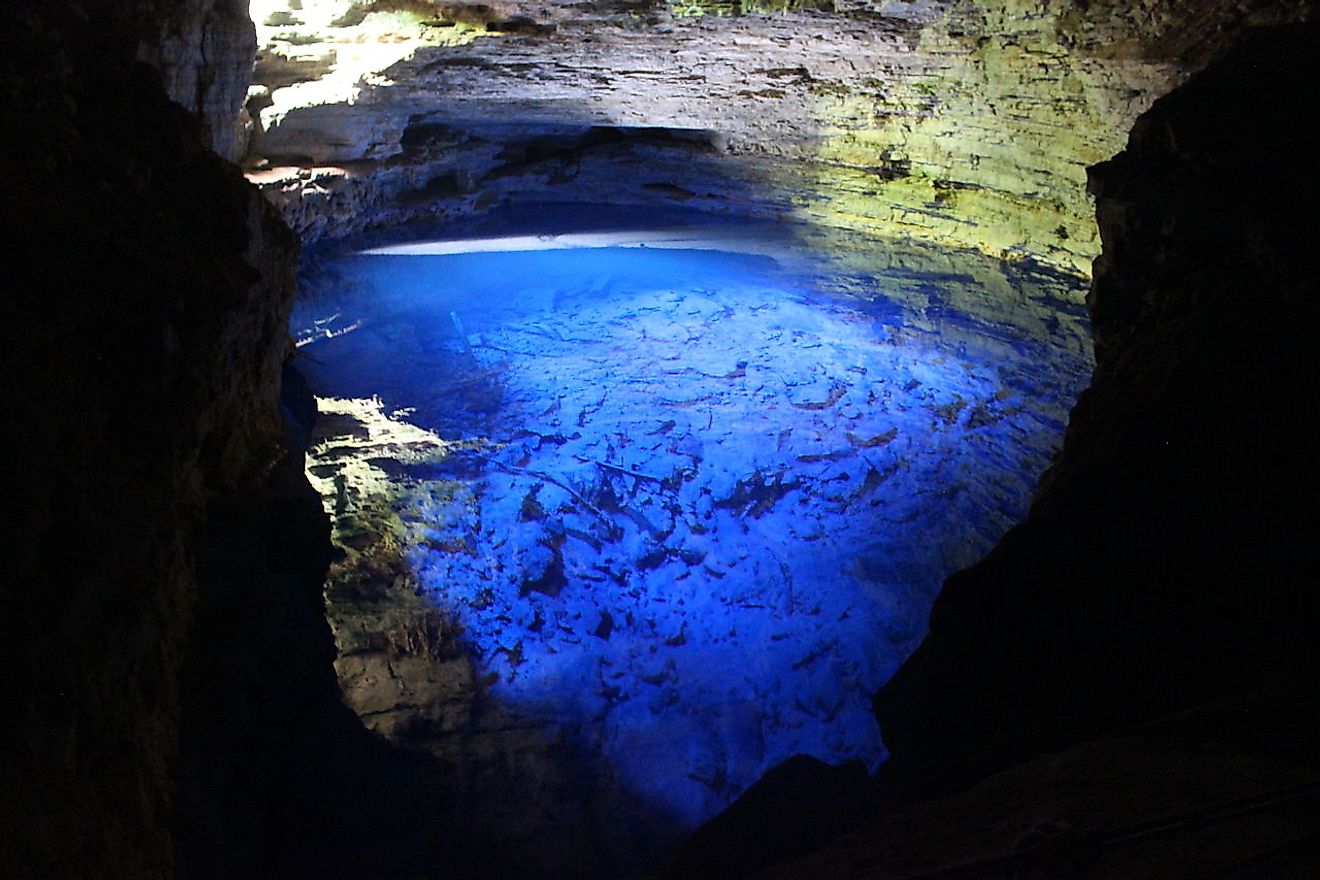
Located in the Chapada Diamantina National Park of Andarai, Brazil, the Poco Encantado is a spectacular sight. It is a mineral-rich water-filled cavern. At certain times of the day, when the sunlight hits the water directly, the water looks transparent making rock formations sitting 30 to 60 meters deep into the water visible. Thus, this pristine cave is a favorite haunt of photographers who wait for the right time to capture the moment when the sun hits the water illuminating it with an eerie glow.
11. Abismo Guy Collet, Amazonas
Brazil also hosts South America's deepest cave, the Abismo Guy Collet that is 671 m deep. It is also the world's deepest quartzite cave. It is located in a tepui and surrounded by lush jungle. It was first explored only in 2006 by a joint Brazilian and Italian expedition. The bottom features a small lake but much of its caverns remain undiscovered. Explorers are still trying to explore its connection to other caves in the region.
10. Dunes Of Jalapao, Tocantins
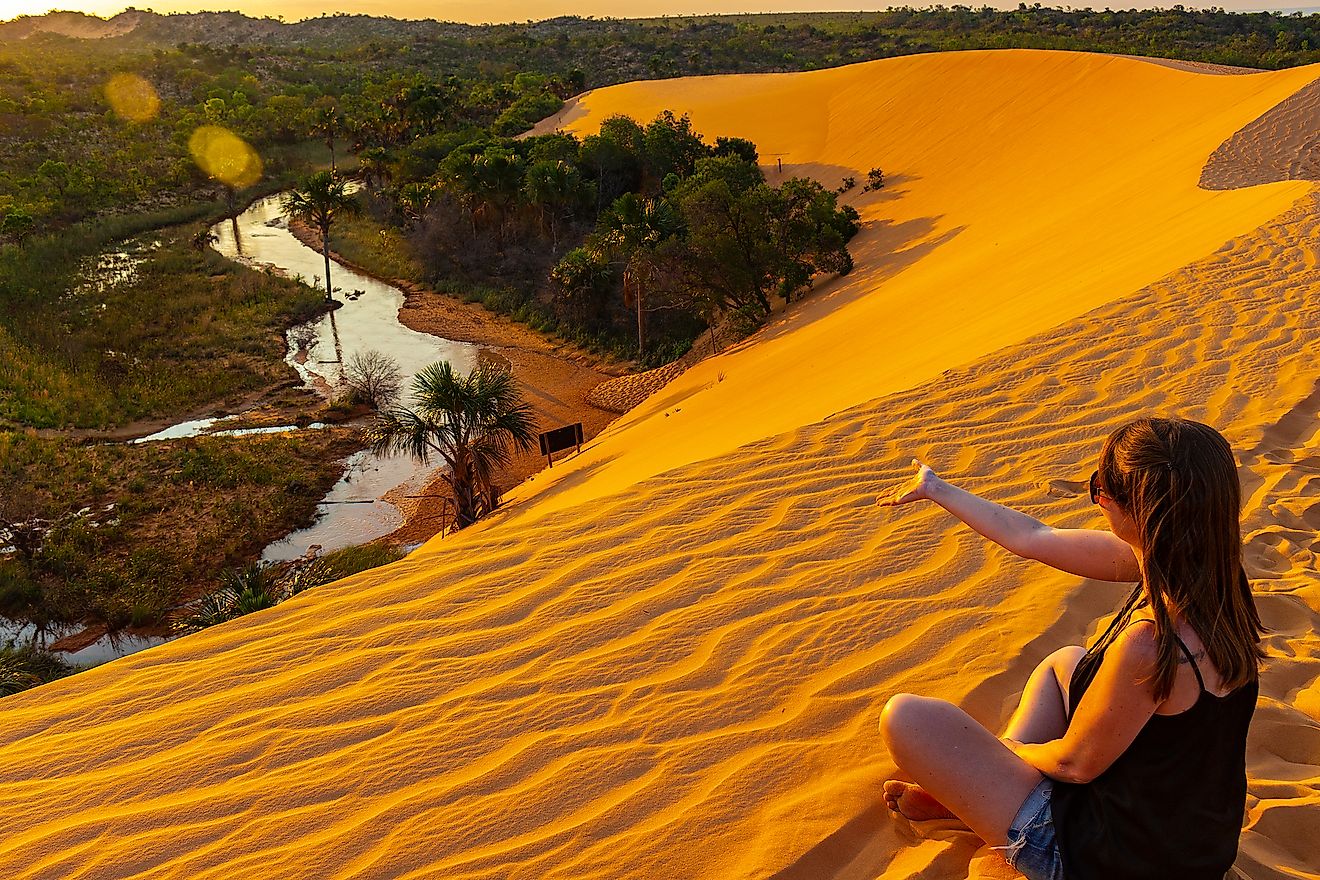
Jalapão is a top tourist destination in the state of Tocantins. It is a semi-arid microregion famous for its bright orange sand dunes and other dramatic landscapes including towering rock formations and fast-flowing rivers. Both adventure and ecotourism are popular in the region. Erosion of the nearby mountains resulted in the formation of the dunes. These are best seen in the late afternoon and many watch the sunset from the area to see the sun seemingly touch the orange sand. The desert-like feature is located alongside waterfalls, hot spring pools, and canyons within the vicinity of the Jalapao State Park.
9. Sugarloaf Mountain, Rio de Janeiro
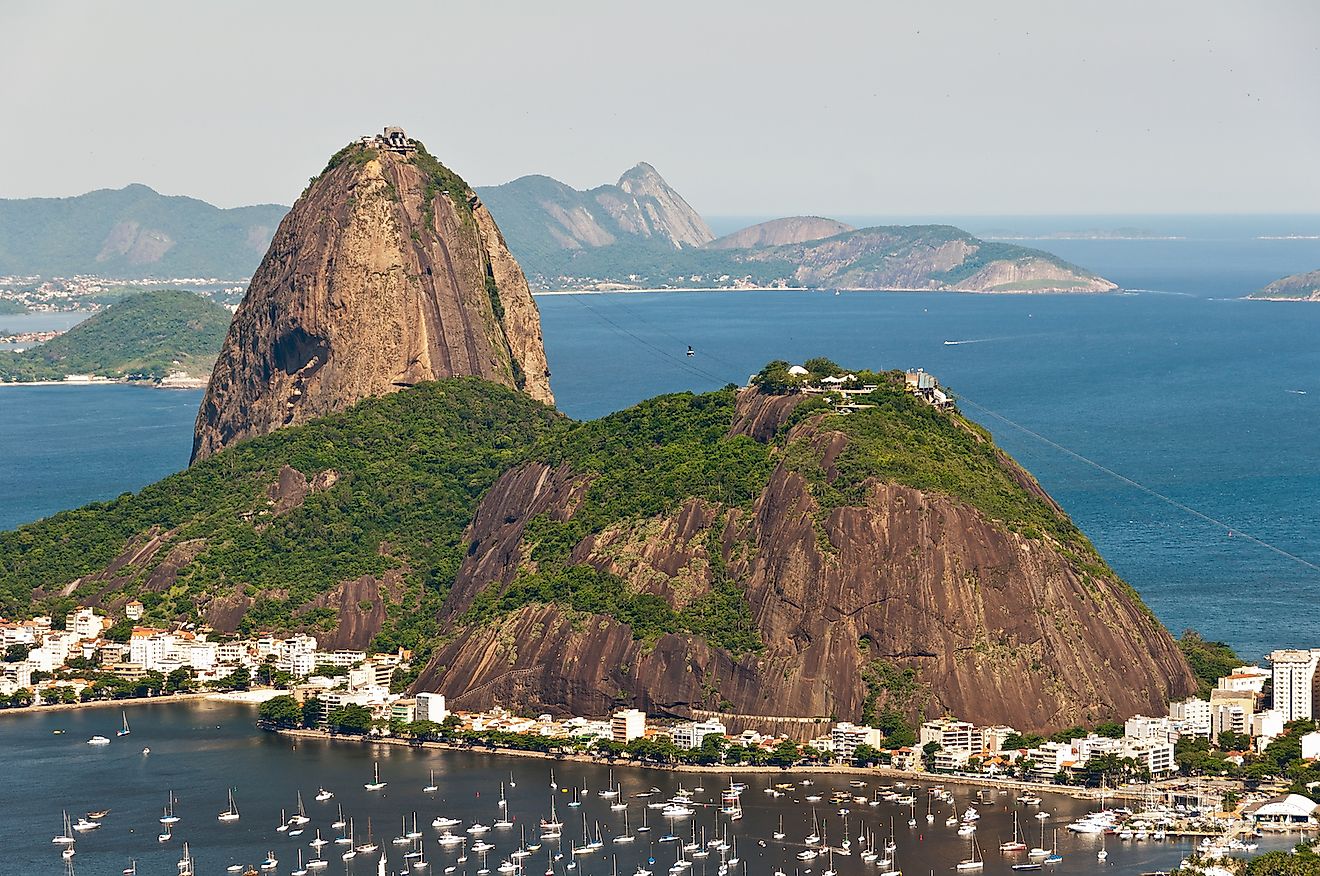
Sugarloaf Mountain is one of the most iconic geographical landforms of Brazil. It is located in Brazil’s Rio de Janeiro at the mouth of the Guanabara Bay. The peak is 1,299 feet tall and is named so due to the resemblance of the shape of the mountain to that of the concentrated refined loaf sugar. The site is a popular tourist destination that is well-known for its panoramic views and cableway.
8. The Pantanal, Mato Grosso do Sul and Mato Grosso
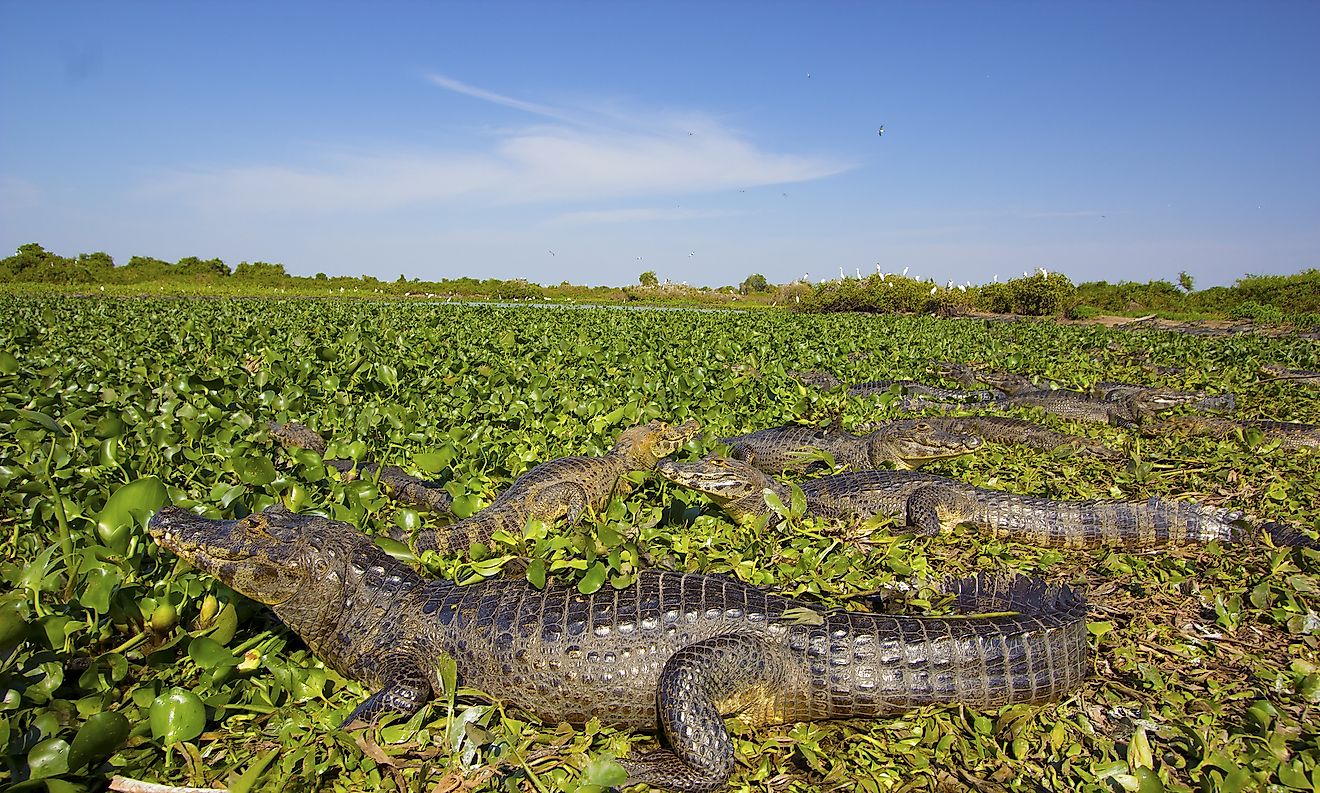
The world’s largest tropical wetland area is part of the natural region called the Pantanal. The greatest part of this area is located within Brazil’s Mato Grosso do Sul state. The Pantanal occupies an area of about 140,000 to 195,000 square km. The ecoregion supports an incredible diversity of flora and fauna. About 1000 species of birds, 300 mammalian species, 400 species of fish, 480 reptilian species, and more than 9,000 invertebrate species are found in the Pantanal.
7. Pico da Neblina, Amazonas
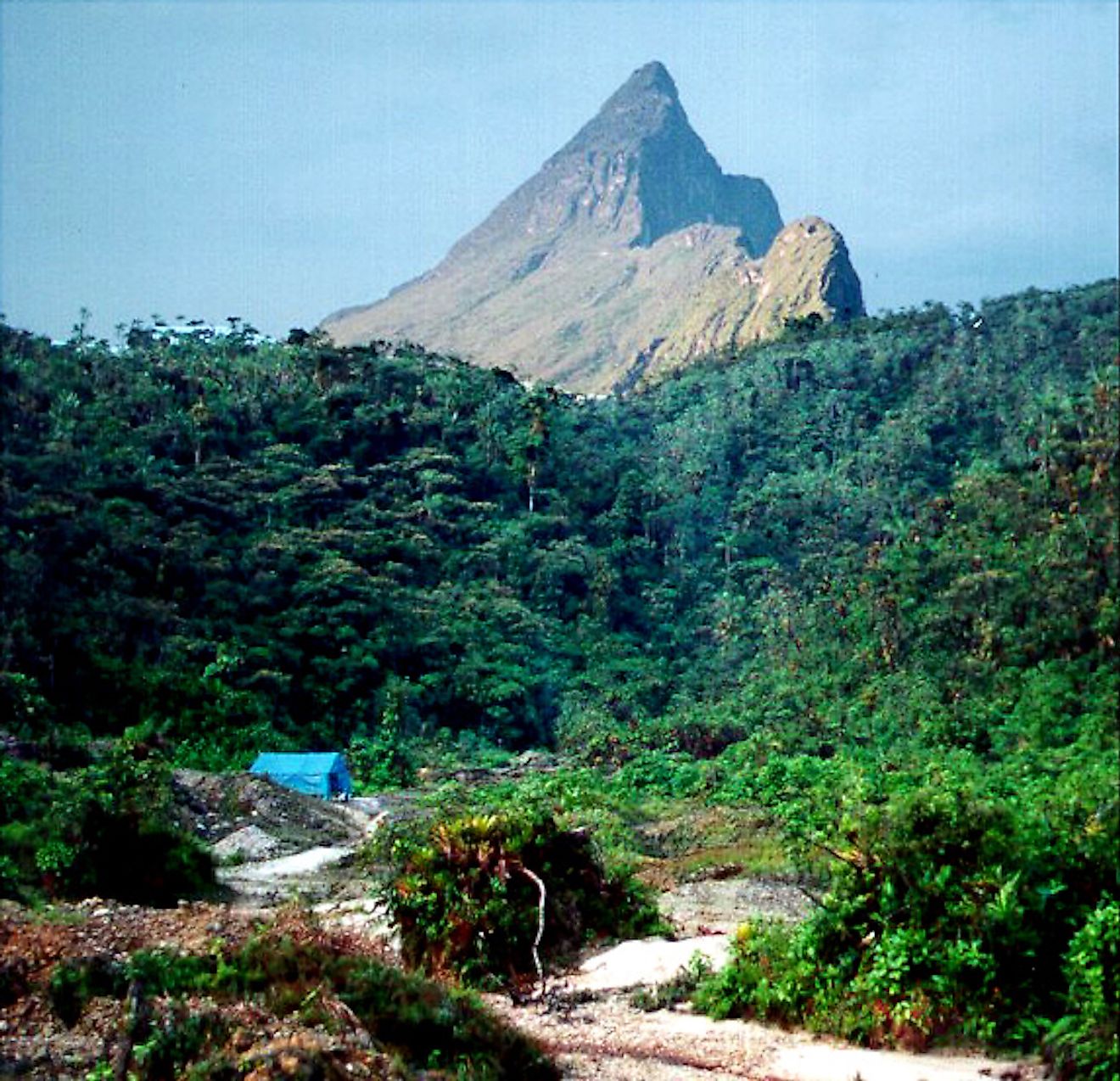
The 9,927 feet tall Pico da Neblina is Brazil’s highest peak. It is located in the Serra da Neblina which is part of the Guiana Highlands on Brazil’s border with Venezuela. The mountain is located in a densely forested national park and access to the area is highly restricted. It takes about four days to reach the peak of the mountain and that includes three days of trekking through the dense forests. Rescue is nearly impossible in the area. Those daring to visit the area are also susceptible to deadly diseases like malaria, yellow fever, and river blindness caused by insect vectors found in the area.
6. Iguazú Falls, Paraná
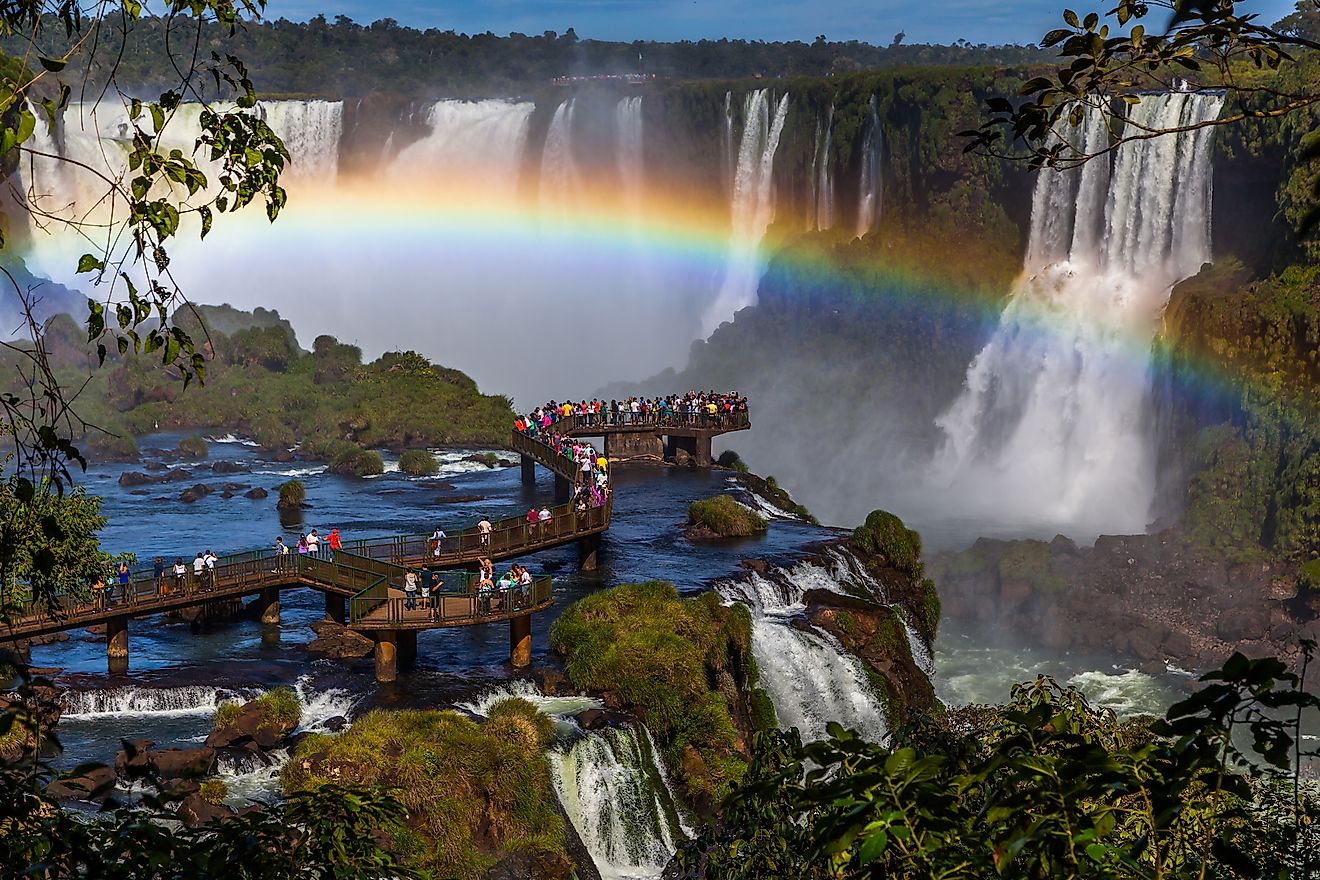
The Iguazú Falls are spectacular waterfalls on the Iguazu River at the border between Paraná, Brazil and Misiones, Argentina. It is the world’s largest waterfall system. The falls divide the river into the upper and lower courses. An interesting local legend is associated with the Iguazú Falls. It is said that a deity wanted to marry a beautiful woman who, however, fled with her mortal lover in a canoe to escape being married to the deity. In anger, the deity created the waterfalls by slicing the river into two halves. The lovers fell to their death in the falls.
5. Rocas Atoll, Rio Grande do Norte
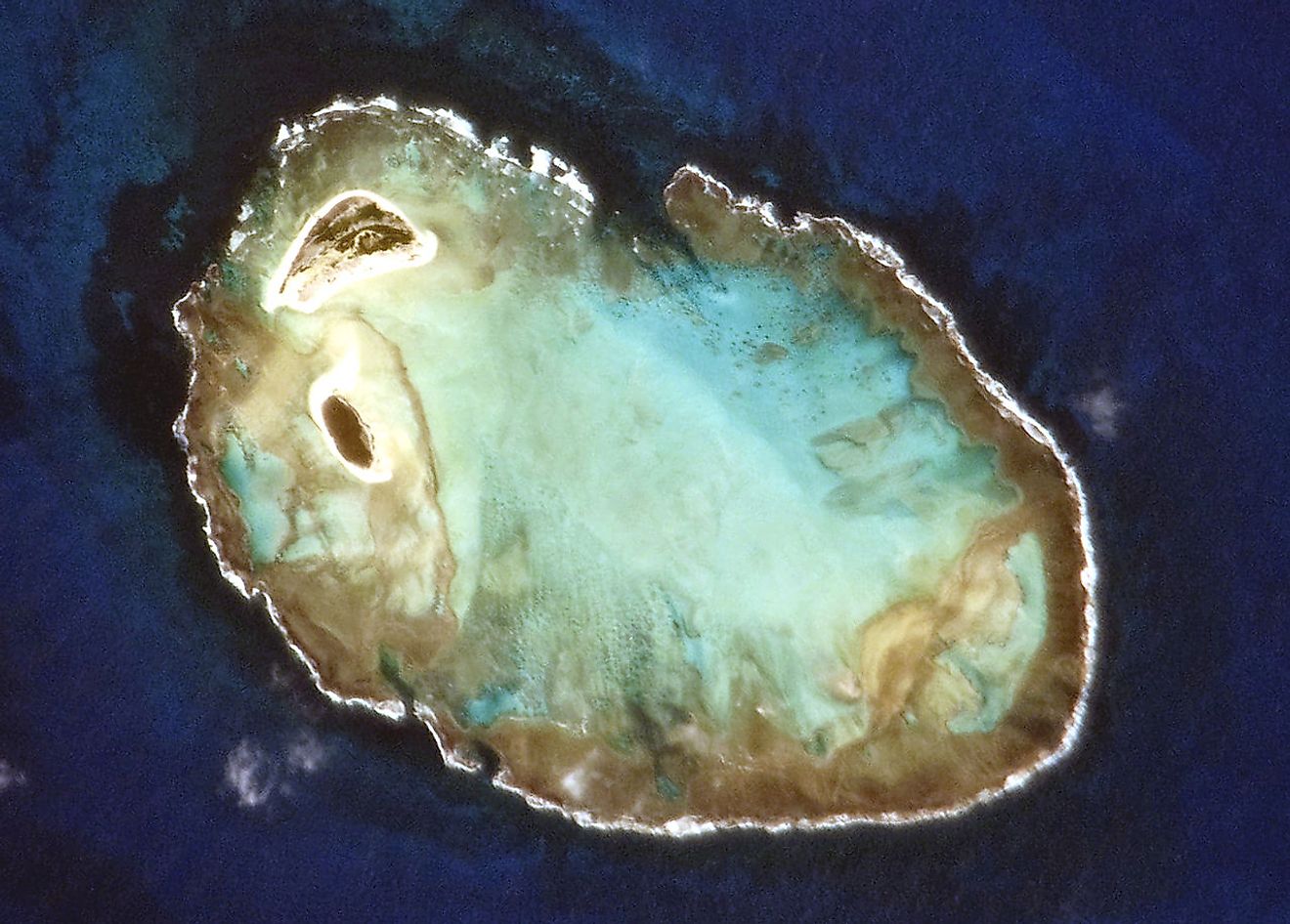
The only atoll in the South Atlantic Ocean, the Rocas Atoll is part of the Rio Grande do Norte state of Brazil. It is a volcanic atoll with a coralline formation. The oval atoll is a wildlife sanctuary that was designated as a UNESCO World Heritage Site in 2001. The area is home to a great diversity of birds, dolphins, sharks, etc. As the Rocas atoll is extremely remote, it is largely undisturbed by human activities. Only some researchers with permits are allowed to study the wildlife and environment of the atoll.
4. Lençóis Maranhenses National Park, Maranhão
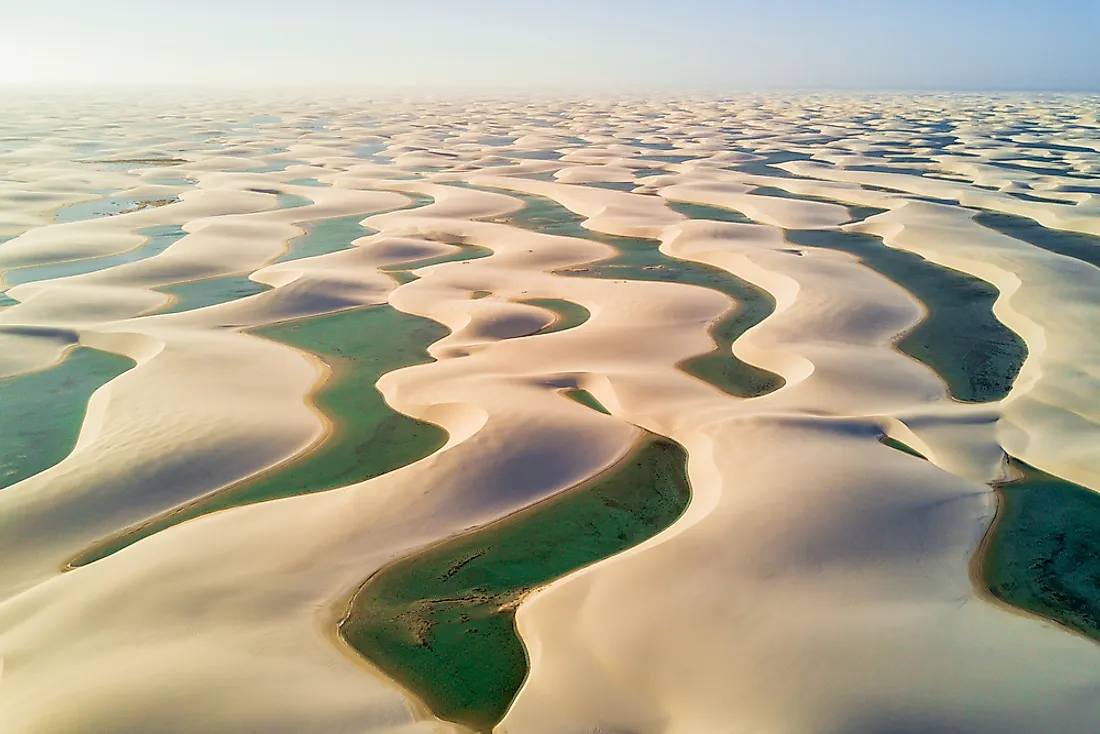
This beautiful national park is located in northeastern Brazil’s Maranhão state. It was established in 1981 and features a 70-km long coastline and rolling white sand dunes towards the interior. One interesting feature of the park is the existence of temporary freshwater lagoons among the sand dunes during the rainy season. The lagoons are formed when rainwater collects in the valleys between the dunes and is unable to percolate underground due to the presence of impermeable rock beneath. The national park is home to several endangered species like the scarlet ibis, West Indian manatee, neotropical otter, and the oncilla.
3. Cachoeira da Fumaça (Smoke Falls), Bahia
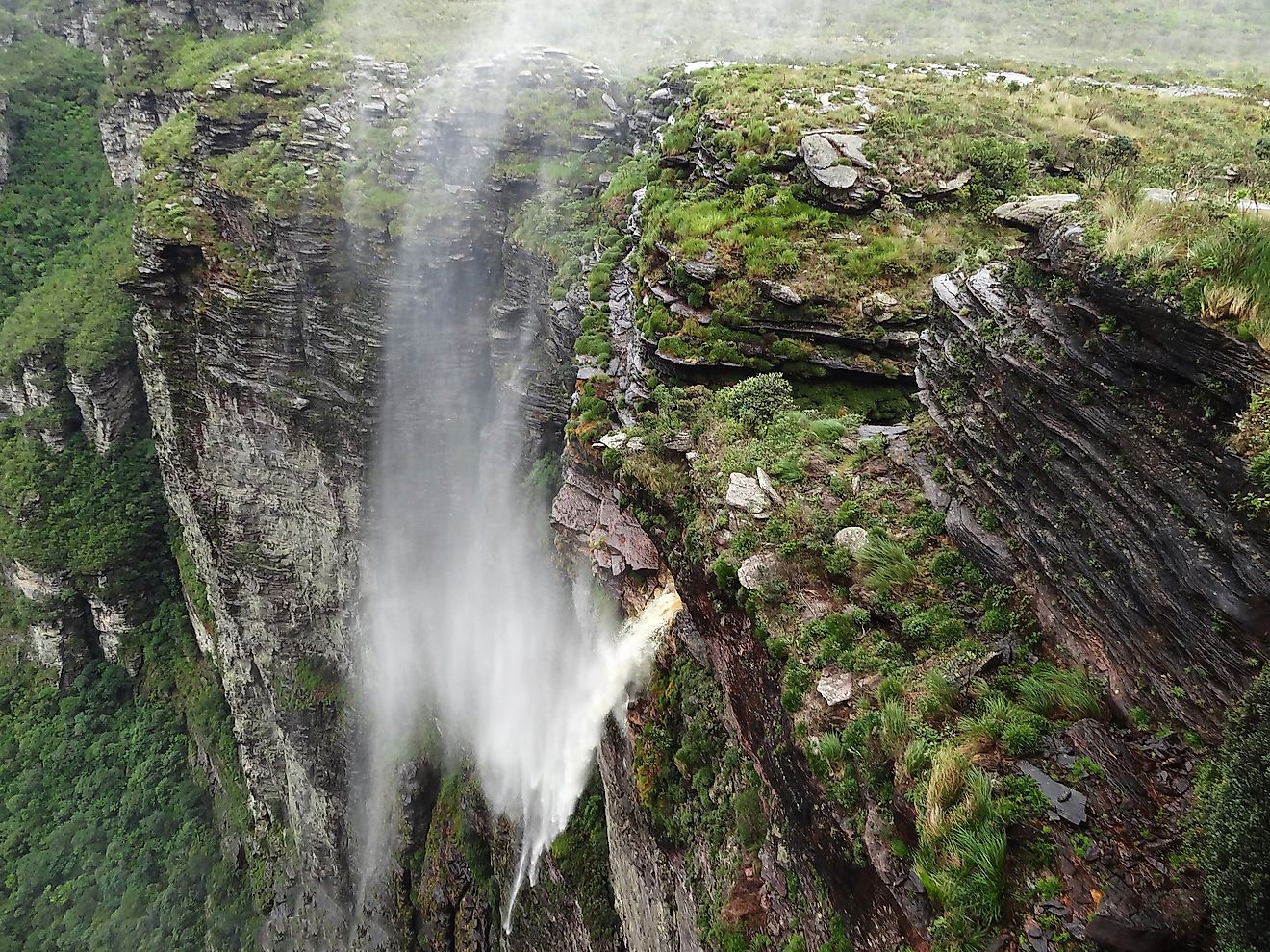
This waterfall is located in Chapada Diamantina, Bahia. The 340 meters tall waterfall was believed to be the tallest waterfall in the country prior to the discovery of the Cachoeira do El Dorado in the Amazon rainforest. The waterfall is famous for its location in an area that is frequented by adventurers. It is nicknamed the “Smoke Falls” since the wind sprays the tiny water flow of the falls before it drops to the ground, giving it a misty appearance. The waterfall is not permanent and goes dry when there is low precipitation. Reaching the waterfall is not an easy task and requires one to traverse through remote places full of exciting challenges.
2. Fernando de Noronha, Pernambuco
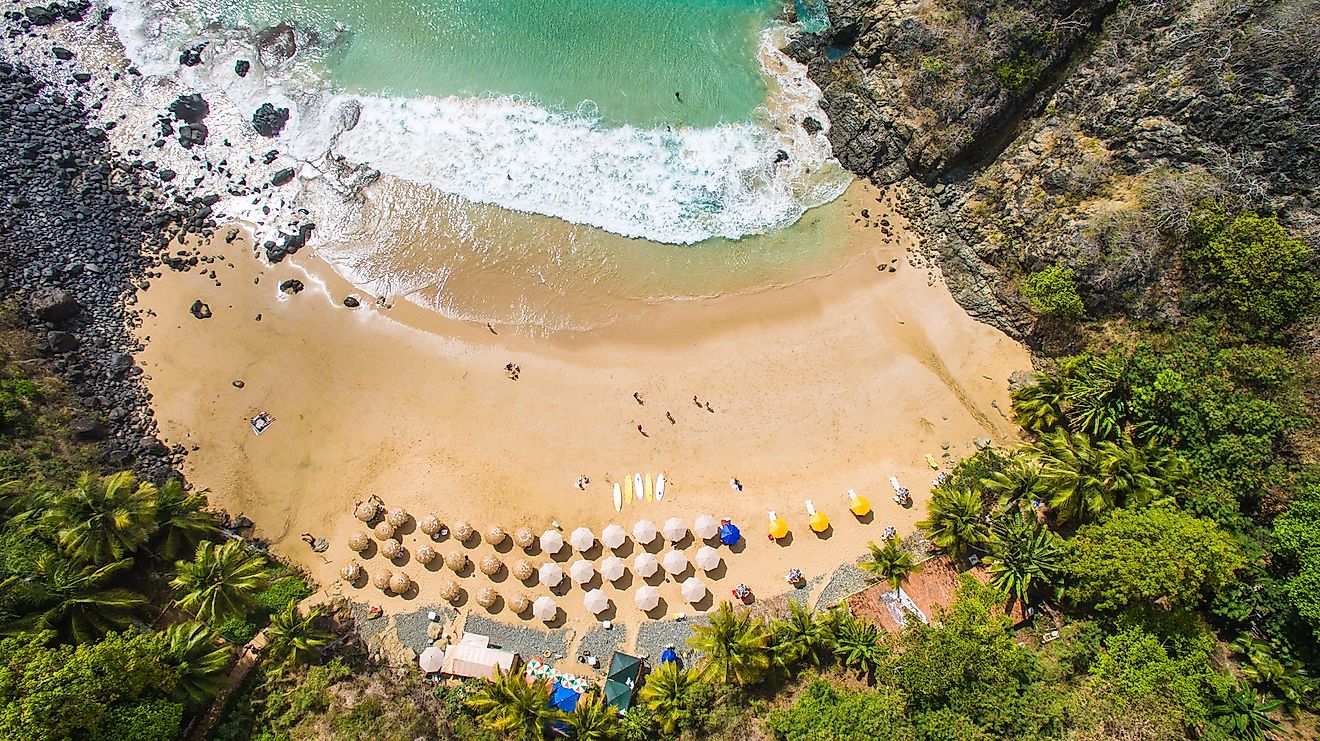
Located in the Atlantic Ocean, 354 km off the coast of Brazil, is an archipelago of 21 islands and islets called the Fernando de Noronha. The main island, bearing the same name as the archipelago, is the only inhabited island in the group of islands. The island has an area of 18.4 square km and a population of around 2,718 individuals. The islands here have excellent beaches and offer great snorkeling and swimming opportunities. More than 200 species of fish and other marine fauna are found in the offshore waters of the archipelago. The Praia da Atalaia is a unique tidal pool that allows visitors to swim along with hundreds of lobsters, fish, and even octopuses.
1. The Amazon Rainforest, 9 states
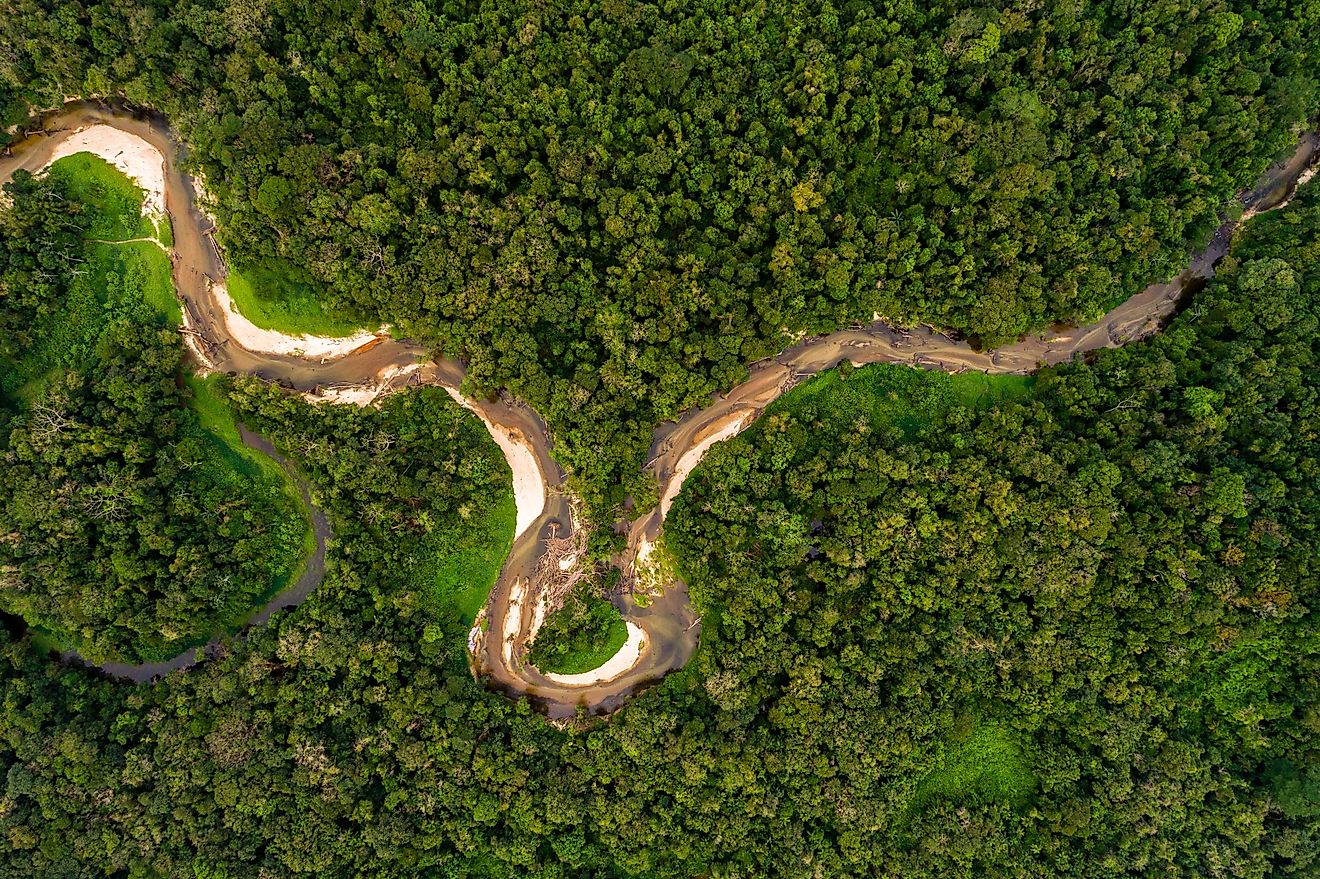
No list of Brazil’s top natural wonders can be complete without mentioning the Amazon rainforest. It is regarded as the lungs of our planet. The Amazon is one of the world’s least explored places and despite human intrusions, a significant portion of the forest is yet untouched by modern humans. The Amazon rainforest is host to an incredible diversity of wildlife. One in 10 species known to us are found in the Amazon rainforest. About 390 billion individual trees belonging to over 16,000 species grow in this rainforest. Nearly 2.5 million insect species, 2,200 fishes, 1,294 species of birds, and hundreds of mammalian, reptilian, and amphibian species inhabit the Amazon.











